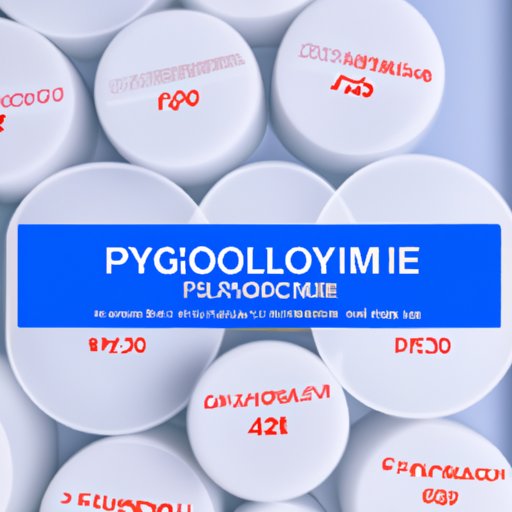I. Introduction
Polyethylene glycol is a chemical compound widely used in various industries and fields. Its versatility makes it the ‘Swiss Army Knife’ of compounds, providing solutions to problems in pharmaceuticals, cosmetics, food, and aerospace. In this article, we will explore how polyethylene glycol works and its potential benefits.
II. Polyethylene Glycol: The ‘Swiss Army Knife’ of Chemical Compounds
Polyethylene glycol is a polymer made up of repeating units of ethylene oxide and water molecules, making it versatile in its applications. It can be used as a lubricant, a solvent, an emulsifier, and a stabilizer. In the pharmaceutical industry, polyethylene glycol is used in formulations ranging from pills to creams as it enhances the solubility and bioavailability of drugs. It is also found in personal care products such as shampoos and lotions as a thickener and a humectant. Furthermore, the aerospace industry uses polyethylene glycol as a de-icer, and it is used in the food industry as a mold release agent and a stabilizer.
III. Science Explained: How Does Polyethylene Glycol Work?
Polyethylene glycol is soluble in water due to its molecular chemistry. It has chains of carbon and oxygen atoms that are hydrophilic, meaning they attract water molecules. Furthermore, its structure makes it a lubricant, as the chains can easily slide past each other. Due to its unique properties, polyethylene glycol can act as a highly efficient transporter that can deliver drugs to precise locations within the human body.
IV. When One Size Doesn’t Fit All: The Fascinating World of Polyethylene Glycol Dosage Forms
Polyethylene glycol is formulated in different forms, depending on the application. For instance, in pharmaceuticals, it can come in powdered or liquid form, or as a cream, lotion or suppository. Each format has its advantages, such as faster absorption or localized treatment. Furthermore, different dosage forms offer different levels of convenience and privacy. For instance, suppositories can be more private than creams while powders can be more convenient than liquids.
V. Polyethylene Glycol: A Solution to the Plastic Waste Problem?
Polyethylene glycol is being explored as a possible alternative to certain types of plastic that aren’t biodegradable. It is already used in combination with other compounds to produce more environmentally friendly products. Furthermore, polyethylene glycol is a material that can be biodegraded, potentially leading to the production of more sustainable products, and protect the planet we live in.
VI. Polyethylene Glycol: Helping to Fight Chronic Diseases
Polyethylene glycol has shown promising results in medical research, particularly in the development of treatments for chronic diseases. For example, in cancer treatment, polyethylene glycol is used to slow down or control the release of drugs into the bloodstream. Furthermore, in the case of inflammatory bowel disease, polyethylene glycol has been used to coat inflamed intestines, providing protective self-immunity. Emerging promising results in the clinical trial of polyethylene glycol, which can indicate the future benefits of polyethylene glycol.
VII. Conclusion
Polyethylene glycol is a versatile compound, widely used in a range of industries due to its unique properties. It dissolves in water, functions as both a lubricant and a solvent, and can be made into several different products. It is highly promising in medical research as a potential treatment for chronic conditions, and also has the potential to reduce plastic waste. As our understanding of polyethylene glycol grows, we may see new applications and innovative uses for this fascinating chemical compound.
(Note: Is this article not meeting your expectations? Do you have knowledge or insights to share? Unlock new opportunities and expand your reach by joining our authors team. Click Registration to join us and share your expertise with our readers.)
